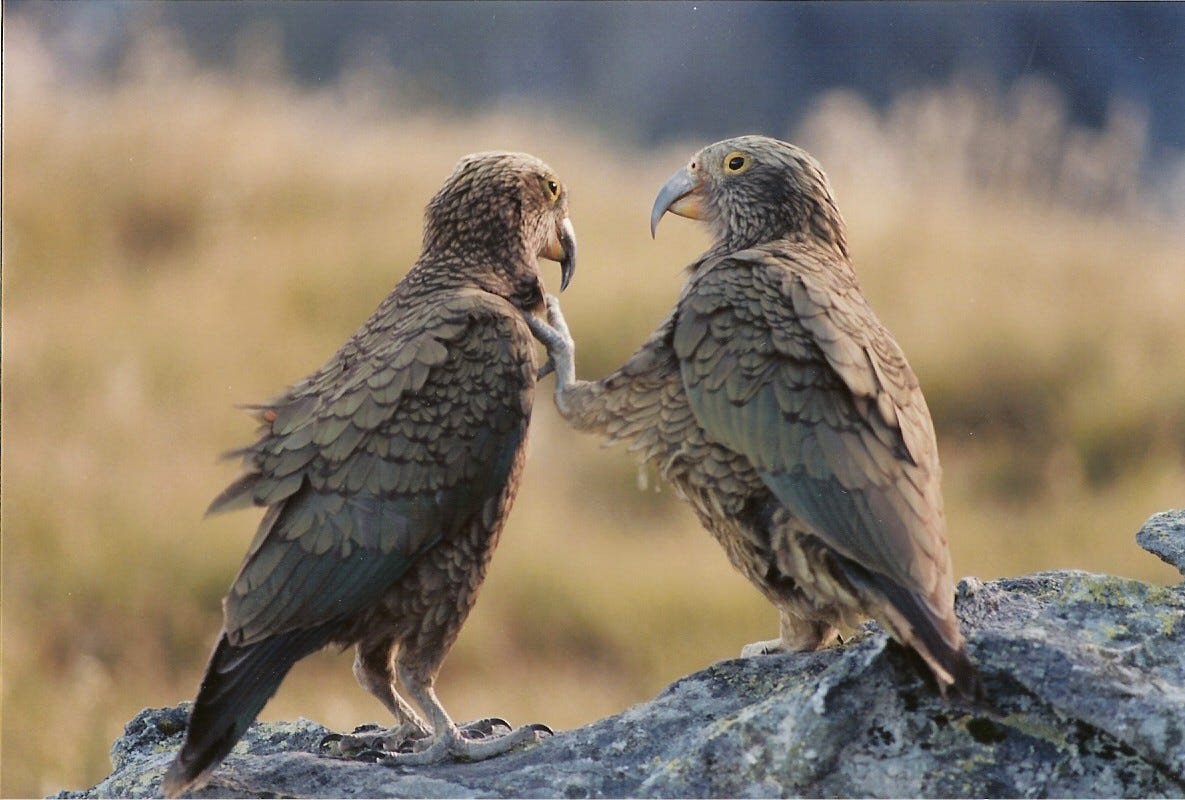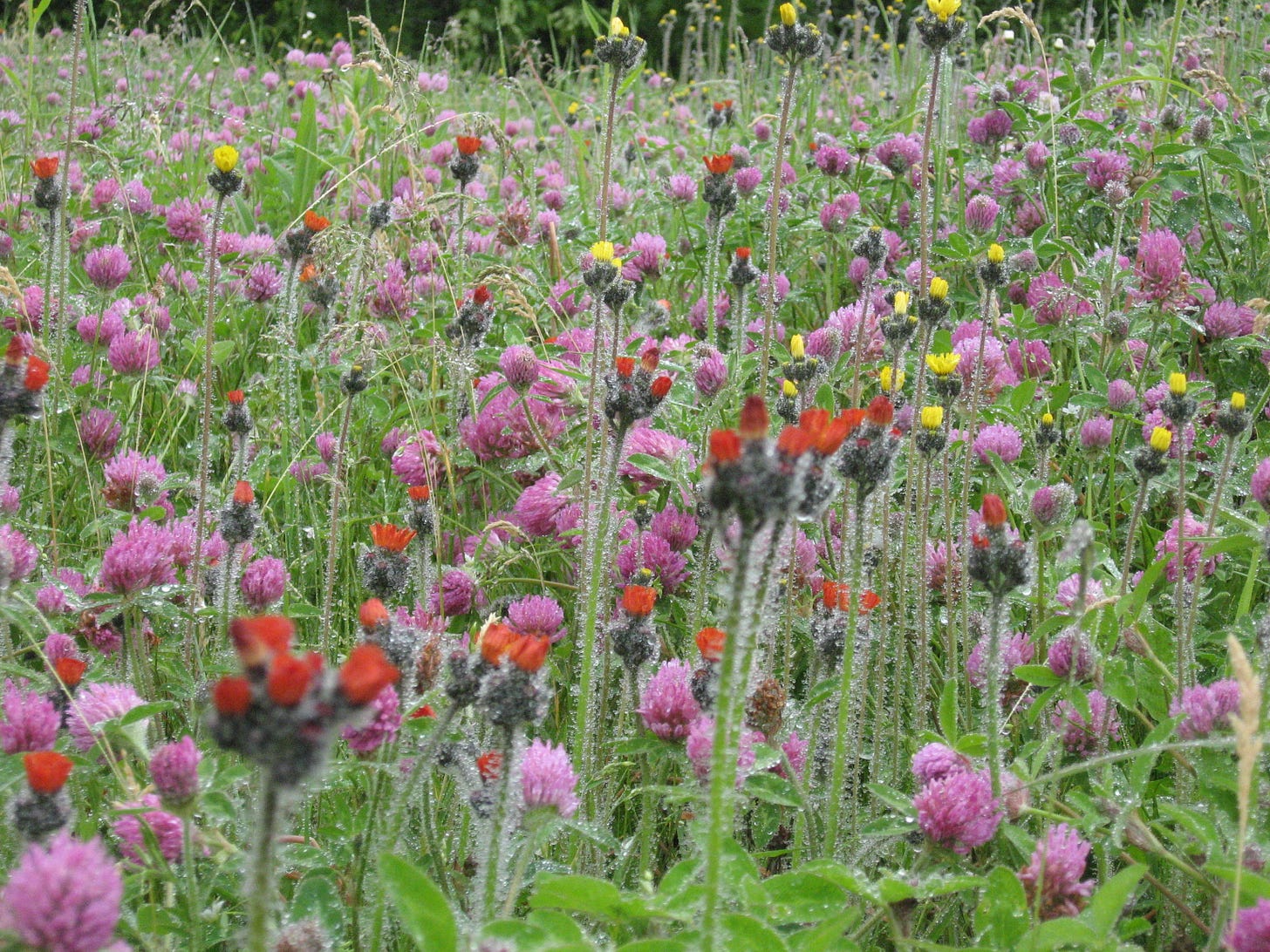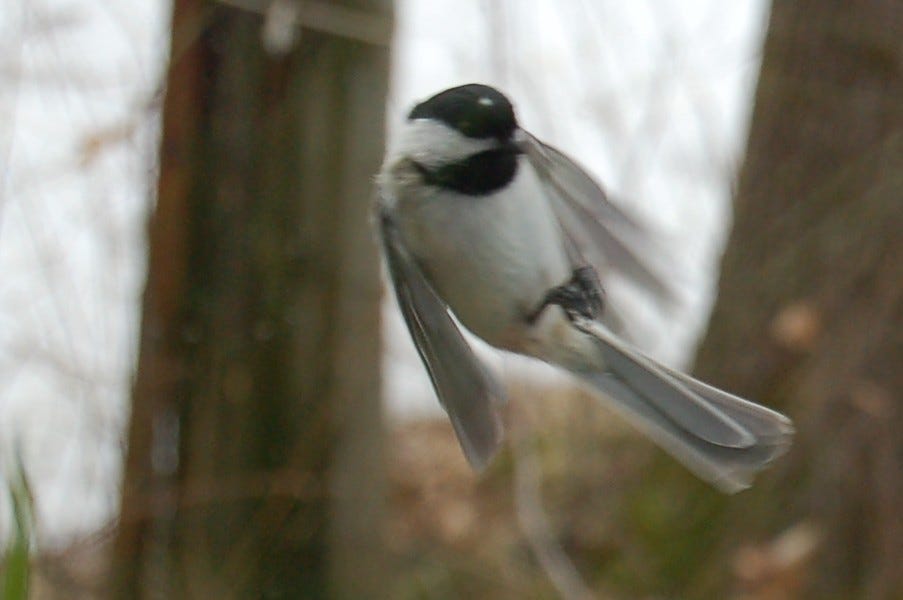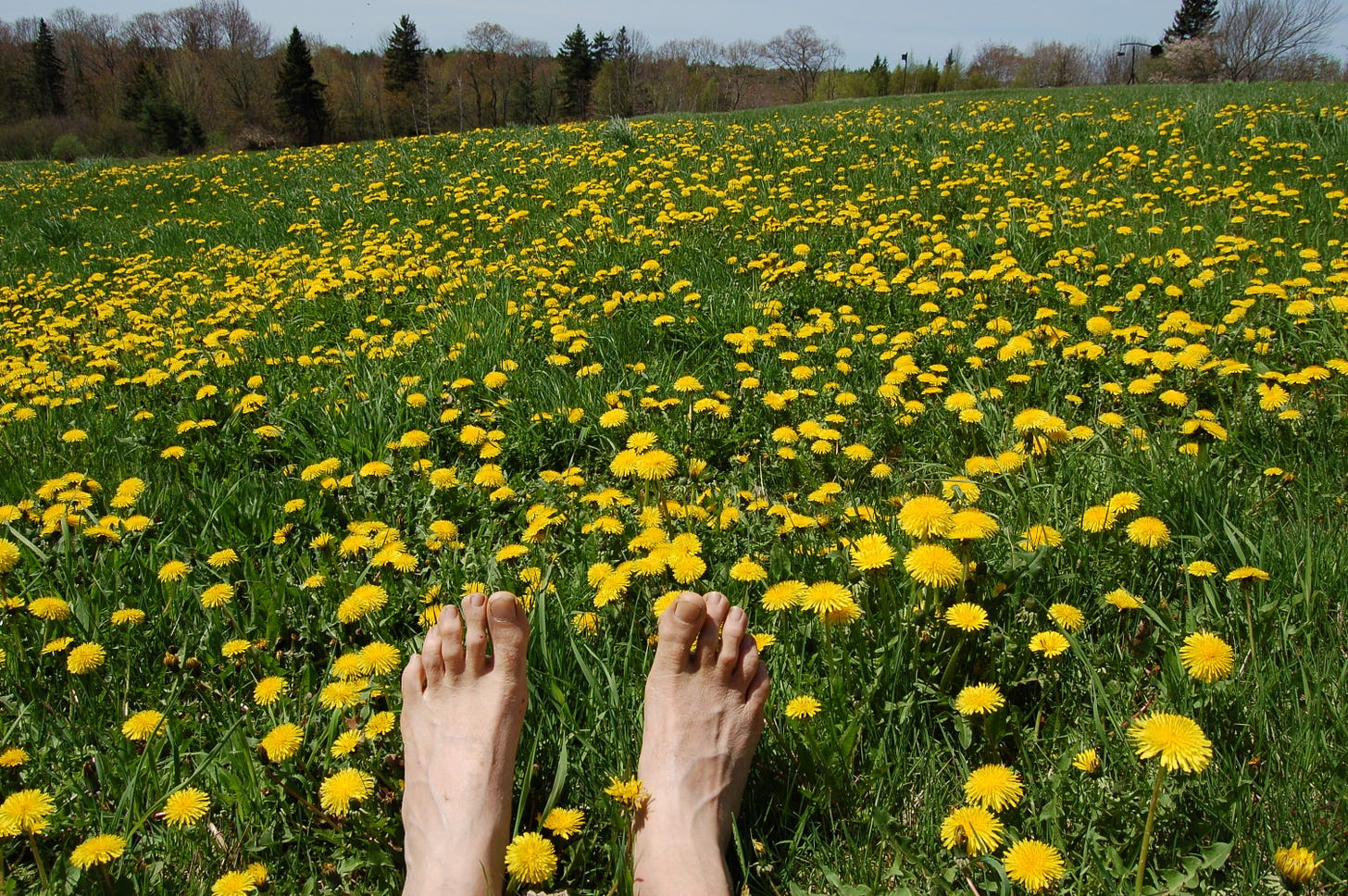If you’re just joining the conversation, and you have a little time, please visit my Substack homepage to read the preceding entries, including the first third of this list.
PROPOSITIONS, continued:
7. The Anthropocene is simultaneously a story of habitat loss and expansion of empire, of resource depletion and global capitalism, of playing god with other species and other humans, of the colonial mindset applied ad nauseam, of white supremacy and human supremacy. (White supremacy is a common term in the news these days. Human supremacy, less familiar, is a more honest version of the polite “anthropocentrism”, i.e. the unconscious assumption that only humans matter. I’ll say much more about this another day.) It is no coincidence that loss of global biodiversity accelerated as northern nations expanded across the southern hemisphere in waves of cultural oppression, economic manipulation, and killing.
Which means the word "Anthropocene" is an ethical mess. It's a Eurocentric construct, a Greek-rooted bit of scientific jargon that claims to speak for all humans. But the Anthropocene was forced upon indigenous peoples and the Global South as violently as it was foisted upon the larger community of life. The term “new age of humans” suggests that the actions of all nations/cultures/people are equally responsible, when an honest assessment puts that lie to shame. And the term also implies that human nature is flawed in such a way as to make the losses inevitable, when a quick glance at the full span of human history shows that the vast majority of cultures mapped themselves into nature rather than above it.
For all its faults, the Anthropocene term is ubiquitous in the literature, so we’re stuck with it for now. And, it must be said, grotesque inequities notwithstanding, nearly everyone now participates in the Anthropocene to one degree or another. There’s no avoiding it, particularly as once-poor nations create wealth and a consumption-driven middle class. From our perspective, the ongoing impacts of slavery and colonial despotism and deliberate impoverishment are all too obvious, as is the unfairness of blaming subsistence farmers alongside ExxonMobil, but from the vantage of a coral reef it little matters whether its obliteration occurs because of American CO2 emissions or a poor Filipino fisherman's stick of dynamite. The victim of a victim is still a victim.
Which means we’re obliged to work on all of it at once: racial justice and reparations, environmental justice and support for indigenous peoples, CO2 reduction and biodiversity protection. It’s a good idea to rename the Anthropocene while we’re at it, but the options I’ve seen (Capitalocene, Chthulucene, etc.) are either awkward or limited in their own ways. That’s a discussion for another time, but maybe we should focus away from the geology and onto the erasure of life and give it a simple, honest title like that of Bill McKibben’s 1989 book, The End of Nature.
*
8. There is no place to hide from the Anthropocene. This was largely true even before climate change burst into public consciousness, as we bulldozed terrestrial ecosystems and yanked vast quantities of life from the oceans, but now that the warming atmosphere is essentially a claw of the Anthropocene reaching into every planetary nook the bulldozers and trawlers couldn’t reach, our impact is truly pervasive. Tropical soils are changing, the deep oceans and Himalayan peaks are changing, the North and South Poles are changing. Whole “pristine” ecosystems in remote parts of the Earth are in climate-related transformation. Million-year-old ice sheets are melting and rumbling.
The only way to “hide” from the Anthropocene is to be wealthy, remote, old, and childless.
*
9. Global warming created by humans is an existential threat to much of life on Earth, including us, and it is essential to draw down our CO2 emissions, but we should remember that global warming is only one symptom of the Anthropocene. It’s the biggest one, looking ahead, but it’s only one. We’re erasing communities of life – coral reefs, rainforests, vernal pools, grasslands – through a variety of bad habits. Even if we magically stopped producing significant amounts of carbon dioxide, reduced global atmospheric CO2 levels back to a Holocene norm, and somehow dealt with the impacts of all the excess CO2 we’ve already forced into the oceans, we would still be creating an unfamiliar and impoverished Earth. The geological signals identified by the Anthropocene Working Group are largely unrelated to climate.
So far, at least. Farther down the dangerous path we’re on, a severe spike in CO2 and temperature may well cause an extinction event large enough to be our primary geological signature, though millions of years from now it may be impossible to distinguish climate-related extinctions from those caused by our other mistakes.
*
10. The Anthropocene is largely a function of population. Affluence and technology are crucial factors as well, but I’m not sure that Earth’s biological limits wouldn’t also be exceeded by ten billion hunter-gatherers and nomadic pastoralists. If we’d maxed out at half a billion people (the population in the 16th century) or at one billion (circa 1804), our glass, bird-killing cities filled with air conditioners and SUVs and burger joints wouldn’t really matter. Well, not as much. Researchers in a world with those populations would still have to determine the scale of impact our cities and CO2 output and industrial agriculture and factory trawlers and clouds of plastic particles and open pit mines had on biodiversity. But we’d have wiggle room. Now, racing to eight billion (by 2023, says the UN) at a net growth rate of 2.6 babies per second, we are way past wiggle room.
*
11. It’s a slow apocalypse by our impatient standards – human attention is rarely excited by predictions of sea level rise and extinction rates for the year 2100 – but it is blazingly fast on the Earth’s clock. We may be an asteroid, but we are also the vulnerable dinosaurs. Well, no, even that’s an anachronism; the dinosaurs were a dominant feature of the planet for over 150 million years, whereas we’ve been reshaping local ecosystems for a hundred thousand years at most, and have only been serious about planetary change for a couple centuries.
Our short attention span is one factor influencing our assumption that all will be well. 2100, for example, is so far off, and think of all we’ve accomplished in the last century! We haven’t failed to make radical change when we wanted it, right? We are the genius tool-makers who put rovers on Mars, factory-made nitrogen in the soil, and artificial intelligence in our pockets. So how can we fail to radically change in a positive direction?
Well, we can fail because very few of our successes are about restraint. Even fewer are about compassionate, multigenerational planning rooted in the understanding that we aren’t important.
*
12. The Earth will be fine? The great writer, paleontologist, and defender of evolutionary theory Stephen Jay Gould spoke at my college graduation in 1990. It was the best part of the day. Gould had fun critiquing the environmentalist notion of “saving the Earth.” As a paleontologist who was familiar with the record of life’s complexity waxing and waning over eons, he knew that even if we nuked the planet back to a soup of microbes, it would slowly recover in some novel, fascinating way. Natural selection would work its evolutionary magic. What environmentalists were saving, he said, was an Earth that was recognizable and useful for us and our fellow species.
So, yes, the Earth will be fine, regardless of what we do, in the kind of immemorial (eternal, really) context we don’t really understand. But the widespread collateral death of such rich, intelligent, beautiful hard-earned diversity of life is a crime not easily wiped away by the rag of geologic perspective. Especially when the crime is one of choice.
I know that the rise and fall of all Earthly forms – animal, vegetable, mineral – is the natural way of things. We haven’t invented death or destruction, merely accelerated them in innovative ways. But just because we didn’t invent gravity doesn’t mean we have the right to push other species off a cliff. I can’t philosophize away our grotesque actions or responsibility, or not for long anyway. One walk in the Maine woods and I’m desperate to see some version of this fabric survive.
I subscribe to E.O. Wilson’s notion of “biophilia,” that we have an inherent love of life on Earth and an innate desire to connect with other species.
Save me a brown creeper spiraling up the lichen-covered trunk of a red oak in search of caterpillars, please.
Save me a snow petrel hovering over green-black swells in the Southern Ocean, save me bloodroot and blue-eyed grass, harbor porpoises and humpbacks, carrion beetles and solitary bees, bison and marmots, diatoms and herring, keas and kiwis, dandelion and lilac. Please.
To be continued…
A Good Idea: Study a Bit of the Real World
How much are we connected to the natural world outside our kitchen window or blurred into meaninglessness on the side of the road? When we walk through a park or meadow or step out of our car at the forested edge of a supermarket parking lot, what do we see/feel/hear in the fabric of life that feels integrated into our experience of Earth? Is it just wallpaper, or do we hear the birdsong and note which plants are flowering and think about the lack of rain?
I think it’s essential for each of us to make a study, however small, of the real world. To know something of what’s at stake, we have to study some thread or corner of it. To feel what’s at stake, we have to be in contact with it, like an amazed kid with her magnifying glass hovering over wet moss. Pick a topic (songbirds, flowers, pollinators, lichens), a species (wood frogs, maples, bumblebees), a place (the bird feeder, the vernal pool, the seashore), a realm of any size, and dive in fully enough that the other parts of your life are shifted at least a little. We have to make room in the daily experience of our constructed reality for what we have sidelined under the notion of a separate “nature”.
We have to make our connection personal before we can effectively make it political. It’s one thing to click Support for an environmental campaign; it’s another to let your attachment to bobolinks turn to anger and action when their 6,000 mile migration from South America to breed in your neighbors’ fields fails, year after year, because the fields were mowed while the young were still in the nest.
It has to be direct experience. David Attenborough and his BBC crew should be sainted for the work they’ve done, year after year, showing us the richness and beauty of the world, but if Life On Earth doesn’t push you outside to immerse yourself in life on Earth, then it’s not doing its job. Think less of the scarlet macaws and birds of paradise and more of the mixed winter flocks of chickadees, titmice, and nuthatches at your feeder. They are equally beautiful and mysterious.
You have to find your own way in, but I think it’s best to start with questions. Which means beginning with observation. What is it you’ve always wondered about? See the spring warblers arrive and ask yourself where they came from and where they’ll build their nest. Look at the variety of lichens on a single tree and wonder with astonishment why you never noticed them before. What are the names of the seaweeds, the flowers, the bugs trapped against your living room window? How do they all live their lives? What role do they play in the ecosystem? Just one of these queries here could be enough to keep you occupied for years if you follow the trail. (Remember Charley Eiseman and his leaf miners?) Every answer, when diving into nature, only leads to more questions.
And, while I’m speaking in clichés… the more you learn the less you know. However deep you go into your study, you still feel like you’re working on a tiny corner of the puzzle, using small observations to try to understand a wildly complex set of relationships. But just sensing that richness of the natural world is delicious, and really the point of the whole thing: the knowledge that the life around us is incredibly vibrant, beautiful, worthy of existence, and tied inextricably together. Which leads me inexorably to the well-worn (and oft misquoted) line from John Muir: “When we try to pick out anything by itself, we find it hitched to everything else in the Universe.” That oak tree over there feeds caterpillars to migratory songbirds and acorns to mammals, hosts lichens and mosses and insects and microbes galore, talks to other trees via an underground fungal network, and stitches soil to sky.
So, how to go about all this? As I said above, it works to just ask yourself a question – How do mosses reproduce? – and see where it takes you. There’s a vast library of books, and of online sources, for amateur naturalists, so I’ll simply describe a few projects my wife Heather and I have done, then get out of the way:
We’ve kept a nature journal/notebook for several years now. It’s mostly a collection of fun personal observations (seeing an owl fall asleep after eating a mouse, finding bobcat tracks) and of the timing of natural events (hummingbirds arriving around Cinco de Mayo, the last aster blooms fading with the first hard frost). It’s all focused on life around the house.
We wander the woods in winter looking for tracks and learning what we can from the behavior we observe. It feels good to find traces of a porcupine plowing his way through deep snow or an otter taking the long way just so she can slide down a small hill, and then to look backward to see your own wandering trail mixed in among them.
We’re not obsessive list-makers, but we do have two lists that have been important to us. Our bird list, like our nature journal, is limited to species we’ve seen or heard around the house and field here. So it’s not the usual life list that serious birders keep, but an account of who has shared this place with us. The other list began with a question: I wonder how many flowering plants there are in and around the field? We each made a prediction – I thought forty or so and Heather guessed fifty – and over the course of a single growing season we found over ninety. It was a challenging process to identify everything (and a few were simply too hard, even for Heather, who led this charge) but it took us deeply into the community of life here. FYI, our favorite flower identification guide for our part of the world is Newcomb’s Wildflower Guide. It’s slightly outdated but brilliant.
As part of a year-long Maine Master Naturalist Program, Heather chose a spot in our woods and returned to it constantly through the year, observing, drawing, identifying, mapping. It’s a marvelous experience to work down from the big stuff – trees, flowers, birds – to the mosses and lichens and insects and animal tracks, and then finally to get an awareness of the complexity in relationships between them all.
There was much more to Heather’s MMNP experience, but I’ll cite just one more aspect here: Heather was required to do quite a bit of drawing/sketching as part of a larger journaling process. If like her (and unlike me) you have that ability, it’s worth it to draw, paint, or photograph in close detail the life that intrigues you. That kind of slow, close study is invaluable for truly seeing the world as it is.
I have maintained a small colony of tree swallows here for several years now. I put up, take down, and maintain or replace eight nest boxes every season. I have loved watching swallows fly – they are supreme flyers cavorting at high speed while somehow dining on tiny insects – since as a child I watched barn swallows zoom in and out of my grandparents’ wharf. I’ve recently moved my nest boxes to a nearby farm, and have a vision (or fantasy) of building hundreds more to place on farms and fields in midcoast Maine to create a bulwark against the steep decline in tree swallow populations in the Northeast.
We have piles of books that either take us deeper into our interests or open doors into others. Just browsing a field guide can be fascinating, but for narratives by experts who know how to talk to the rest of us I highly recommend Robin Wall Kimmerer’s Gathering Moss and Braiding Sweetgrass, Adam Nicholson’s The Seabird’s Cry, and Bernd Heinrich’s Winter World and Summer World and Life Everlasting and Mind of the Raven (to name just a few of his books). These books make particular sense for my part of the planet, so you may need to ask your local bookstore for local recommendations. I’m sure all of you are already thinking of books you want to add to the list. Please do.
A final note: I acknowledge I haven’t used the word “science” here once, despite the obvious fact that it underlies nearly every information source you’ll reach for in studying the real world. You will stand on the hunched shoulders of generations of astonishingly patient, brilliant scientists – both professional and amateur – as you read up on the species or places that excite you. My focus here has been on direct experience rather than on the scientific process. But as a note of interest for the scientists among my readers – you know who you are – I highly recommend you read Bernd Heinrich’s description (see link below) of the process that led to the 1979 publication of his first book, Bumblebee Economics, because of the tension between his mutual loves of naturalist observation and “hard” science (insect physiology) in the lab. I think of that tension as a now-absent mid-20th-century mindset, but am curious whether it persists today in some fields.
Oh, one more thing: Don’t just study the real world just because it’s the right thing to do. It’s incredibly fun and rewarding and exciting and inexpensive and largely stress-free. What else in your life can you say that about?
Links:
Scientific American article on ethical problems with the Anthropocene name: https://www.scientificamerican.com/article/the-term-anthropocene-is-popular-and-problematic/
An excellent summary by Eileen Crist of the crisis we call the Anthropocene through a focus on the idea of human supremacy: https://science.sciencemag.org/content/362/6420/1242
Bill McKibben’s books: http://billmckibben.com/books.html
Anthropocene Working Group: http://quaternary.stratigraphy.org/working-groups/anthropocene/
Population figures: https://www.worldometers.info/world-population/, https://www.medindia.net/patients/calculators/worldpopulation.asp, https://www.census.gov/popclock/
An introduction, via obituary, to Stephen Jay Gould: https://www.nature.com/news/2002/020520/full/news020520-3.html
An introduction to E.O. Wilson’s biophilia hypothesis through a diverse collection of essays: https://islandpress.org/books/biophilia-hypothesis
Maine Master Naturalist Program: https://mainemasternaturalist.org/
Books by Robin Wall Kimmerer: https://www.robinwallkimmerer.com/books
Good, short review of Adam Nicholson’s The Seabird’s Cry: https://orionmagazine.org/review/the-seabirds-cry/
The list and write-up on all of Bernd Heinrich’s books: http://www.thenaturalistsnotebook.com/books-by-bernd
In other Earth-shattering news:
Want to see how the world has changed over the last few decades? Zoom in with Google Earth’s new time-lapse tool and watch the years – 1984 to present – play on a loop. It’s the Anthropocene in action, both in what you’re seeing and in the way you’re seeing it. Thanks to my friend Liesl for the suggestion: https://g.co/earthtimelapse
The pandemic has accelerated what was already a slow, steady decline in U.S. population growth. Births in 2020 were the fewest since 1979: https://www.nytimes.com/2021/05/05/us/us-birthrate-falls-covid.html
Unsurprisingly, inactive oil wells can be a major source of methane emissions: https://scitechdaily.com/inactive-oil-wells-may-be-a-big-source-of-methane-emissions/
Atmospheric rivers are fascinating, and polluted: https://scitechdaily.com/scientists-map-rivers-of-pollution-in-the-sky/
Thousands of tons of microplastics are in the atmosphere: https://www.livescience.com/atmospheric-microplastics-studied-first-time.html
Want to cut sea-level rise expected by 2100 in half? Sharply limit global warming to 1.5°C. Want to increase melting in Antarctica tenfold in the same timeframe? Allow temps to rise 3.0°C: https://www.nytimes.com/2021/05/05/climate/climate-change-sea-level-rise.html
Complete and “error-free” genomes of 71,657 named vertebrate species are being mapped and preserved in the Vertebrate Genome Project, which should take ten years: https://www.nature.com/immersive/d42859-021-00001-6/index.html
Here’s an article on the first big step forward: https://www.nature.com/articles/s41586-021-03451-0








I'm really enjoying these. I was wondering if you would discuss the nature of the name 'anthropocene' and how it is an incomplete picture. I appreciate your take. I've always though it is not so much that all humans have caused the havoc but our propensity towards civilization that has caused it. I work for a centre with anthropocene in its name but, privately, I call it the civilicene. I look forward to reading more.
Jason, you write everything you write so beautifully. I am honored to be reading it.